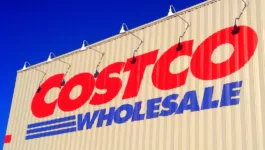We love that Costco makes wholesale prices accessible to a consumer market. For an annual fee, customers can join the wholesale club and score major savings at their stores.
But that might be common knowledge. There are a few other, lesser-known facts about Costco that reiterate our admiration for the brand — and might even surprise you.
For example, did you know that they have a store in Iceland? Or that the pie from American Pie was bought from Costco? Below, read more about other things you probably didn’t know about Costco, and what you can learn from the big-box retailer for your own business.
Aisles aren’t labeled
While a traditional grocery or department store might have aisles clearly labeled, and merchandise grouped in a certain way, Costco does without.
The stores are organized in a maze-like horseshoe pattern, according to Culver City, California Costco general manager Thad Kleszcz.
And the space is also set up to give shoppers a treasure hunt-like experience, surprising them with great deals in unexpected places. This encourages shoppers to linger longer, and explore more deeply.
The takeaway: Really think about how your space is set up, and where in-store signage comes into play. Provide a clear pathway that guides customers through your space, encouraging them to stay longer in areas where you have prominent displays, promotions or signage.
A pricing strategy that doesn’t change
A hot dog and a drink at Costco in 1985 cost $1.50. Today, that same combo STILL costs $1.50.
That’s not the typical narrative you hear when it comes to pricing over the years, but Costco has stuck to its $1.50 hot-dog-and-soda deal for more than 30 years.
In an article published by CNN, Nathaniel Meyersohn writes, “The humble $1.50 hot dog is a secret weapon for the big-box warehouse club. It’s one of the perks that helps persuade shoppers to dish out $60 or $120 for a membership every year.”
Maybe the combo isn’t a big money-maker for Costco, but the other purchases that shoppers make are what contribute to the bottom line.
The takeaway: Despite making little profit (or possibly none at all) on the hot dogs and drinks, the combo has proven profitable for the retailer because it’s what lures shoppers in to spend more money elsewhere. When pricing your products or services, find that core, tried-and-true offering that most of your customers purchase and price it attractively.
Costco doesn’t advertise
If you don’t know the brand, you’ve probably at least heard of Costco before. And that’s NOT because of major marketing and advertising budgets. In fact, Costco doesn’t have much of a budget in that area at all.
Rather than depending on paid promotional strategies, Costco relies on the exclusivity of a paid membership model and delivering an exceptional (and consistent) customer experience.
The takeaway: You may not be in a position to eliminate your marketing and ad spend altogether, but there are lessons to be learned here. Before prioritizing these outbound strategies, make sure you can deliver on your brand promise. If you haven’t nailed the experience, those marketing and advertising dollars could be wasted.
Plus, customer retention is more cost-effective than customer acquisition. If you can keep loyal customers coming back, you’ll have an easier time at generating regular sales.
You can buy a private jet membership from Costco
Did you think Costco was for bargain-hunters in the middle class? Private jet memberships, diamonds, and Waterford Crystal are just a few of the big-ticket items members can purchase. In fact, more shoppers with disposable income hold Costco memberships than you might think.
The Costco shopper’s average annual income is $100k, while those who opt for Walmart make around $56k and Target shoppers just $65k.
The takeaway: Understand your shoppers’ spending power and find products and services which appeal to those shoppers. Costco has luxury offerings because they recognize that their customer is wealthier than the average department store shopper.
They haven’t always been credit card-friendly
For a while, the only credit card Costco would accept was American Express — which isn’t even the most popular credit card.
That changed in 2016, when Costco opened its payment processors to Visa credit cards and ditched AmEx in the process. Now, “Costco accepts all Visa cards, as well as cash, checks, debit/ATM, EBT and Costco Cash Cards. Photo identification and approval by a supervisor or manager may be required,” according to their website.
One big reason that Costco has held out on accepting all credit cards mainly comes down to payment processing and swipe fees. Sean McQuay writes for NerdWallet:
“Accepting credit cards is often among merchants’ largest expenses, after personnel, cost of goods and rent. Debit cards, whose fees are capped by the Durbin Amendment, are much cheaper to accept. But at the same time, merchants want to accept credit cards, because credit makes it easier for customers to spend more money.
Costco is big enough to drive a hard bargain on those credit card fees. It also knows it has an ideal customer base that’s both wealthy and loyal. By making exclusive pacts with payment networks — first with Discover, then AmEx, and now with Visa — Costco is offering its wealthy, high-spending credit card customers exclusively to a certain group of banks in exchange for lower transaction fees.”
Costco’s had success with this move, McQuay points out, citing a Bloomberg report that found that the retailer has reduced its 0.6% fee per transaction to just 0.4% with Visa.
The takeaway: Even Costco isn’t immune to consumer trends. Find ways to accommodate all sorts of payments from your customers, both now and in the future. BUT that doesn’t mean you have to lose money to unreasonably high credit card processing fees.
Consider merchant services providers such as Payment Depot. Payment Depot only charges a flat rate, so if you make more sales, you’ll still pay the same in payment processing fees. If you don’t have the sway that a big name like Costco does, this could be a great option to keep those expenses low.
Costco has the third-largest magazine
Costco Connection is the brand’s monthly magazine, available in print and online to its Executive members. The magazine is mostly lifestyle-based, offering easy recipes, travel articles and health tips, among other content that appeals to a broad audience base.
But the fact that Costco publishes a magazine isn’t exactly surprising. What is, is the fact that it’s the third-largest magazine in the U.S., at a circulation of more than 13 million.
And though the company has tried to migrate to a digital format, they’ve found that their customers actually prefer the printed format. But, as Michael Winkleman notes, the payoff is worth it:
“The magazine is too important as a member benefit; too many regular Costco members up their membership spending to the Executive level (twice the cost of the Gold Star-level membership) just to get the magazine, and too many of Costco’s goods suppliers participate in the company’s co-op advertising programs to consider cutting back.”
The takeaway: It’s all about putting your audience first. Create content that’s engaging and valuable. Remember to remain transparent to build trust with potential customers and avoid coming off too salesy.
You’ll also want to choose the right medium for your content. In Costco’s case, print works well. Just because everyone says “print is dead” doesn’t mean it’s dead to YOUR customers.
Take another example, which Winkleman also points out: The AARP has great success with print. They cater to an older demographic, which tends to prefer print over digital. If your customer segments show preference to a certain format of content, give them what they want.
There are multiple ways to “hack” your way in without a membership
While you *technically* have to be a paying Costco member to be able to shop, there are a few ways around it:
- Health and pharmacy: If you schedule an eye exam or need to purchase medications from the Costco pharmacy, you don’t need a membership. You can enter the store, do what you need to do, and then shop the warehouse.
- Alcohol: In many states, Costco doesn’t require a membership if you want to purchase alcohol. The only requirement here is that you’re of legal drinking age, and then you’re free to shop the non-alcoholic goods afterwards.
- Gift cards: While paying members can bring a guest for free, they can also purchase gift cards for non-members. Non-members can then use those gift cards in place of membership to be able to shop at Costco.
The takeaway: Don’t be afraid to give customers a free sample of what it’s like to be a paying customer. For merchants in food and bev or skincare, this is the more obvious tactic of offering free product samples to customers. In other verticals, don’t be afraid to get creative.
MudbuM facial bar, for example, frequently has specials for first-time customers to receive discounted facials or free add-ons. And Amana Yoga in Boulder, Colorado offers first-time students a steeply discounted rate on their monthly membership.
Costco’s B2B model works differently than its D2C one
While “regular” Costco customers pay a membership fee to gain access to wholesale prices for goods, business customers don’t enjoy the same perks.
Costco’s merchant services don’t follow the same membership model. In fact, their pricing structure is actually MORE costly for businesses — the opposite of how they serve their D2C market.
Instead, they have a tiered pricing model. That means that the rates advertised on their site — 1.22% + 12¢ per transaction for on-site and in-store, 1.99% + 25¢ per transaction for online, and 1.22% + 12¢ per transaction for on-the-go — are only for qualified transactions, which are usually debit cards and non-reward credit cards. Mid-qualified and unqualified transaction rates are higher, and this includes corporate cards and high rewards cards.
At Payment Depot, credit card processing fees are more similar to Costco’s D2C model. Merchants pay a flat membership fee to get wholesale interchange rates, which takes less of a cut out of profits.








